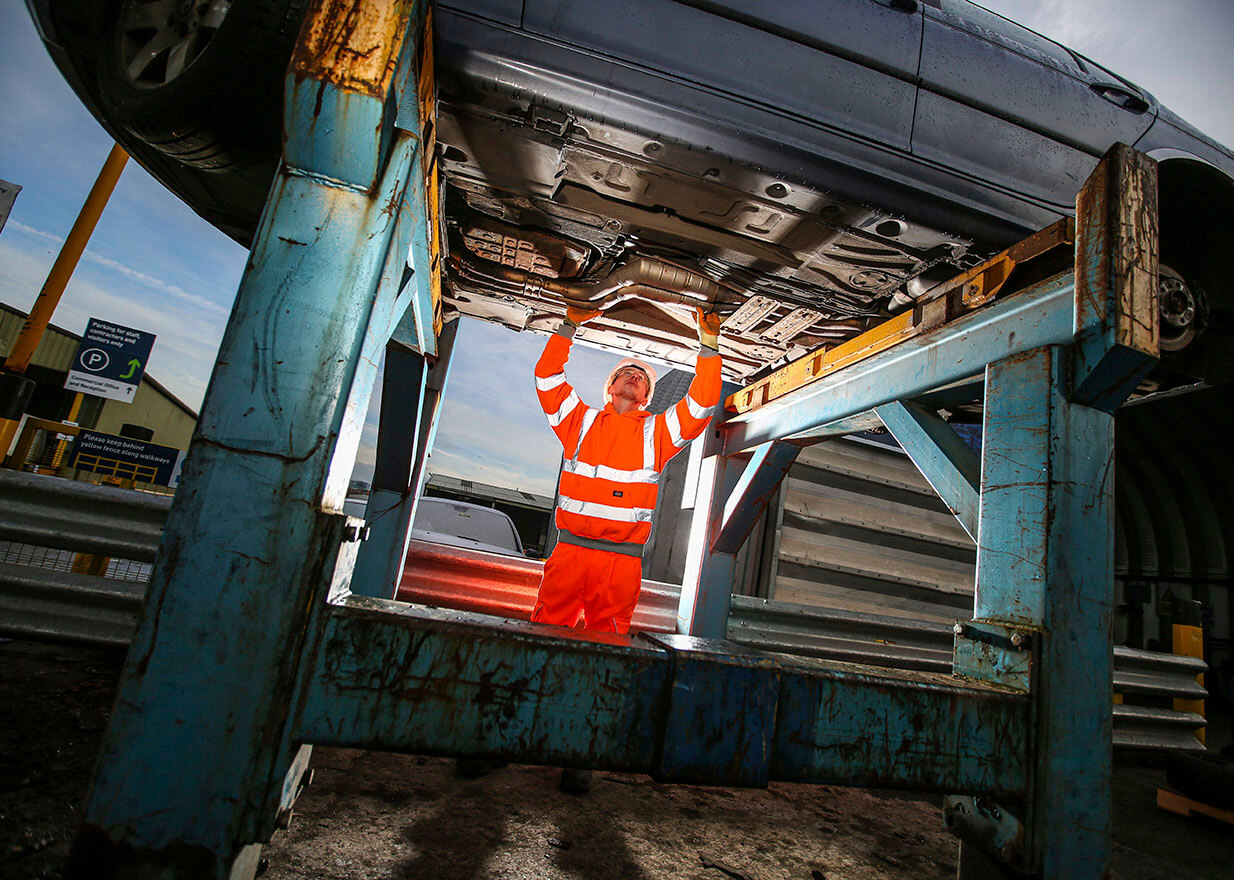CHOOSE
A DIFFERENT TERRITORY

At EMR, we have always adapted to innovations in technology, and the materials that manufacturers use to deliver them. There have been few bigger shifts than the current evolution of the car industry, which is leaving behind the combustion engine in favour of electric vehicles (EVs).
Around the world, drivers are migrating to EVs because they want to mitigate the carbon impact of the vehicles they drive. And that’s great news because individuals wanting to do the right thing has caused one of the biggest changes to the automotive industry in a century.
However, with the UK set to ban the sale of fossil fuel-run cars by 2030, there is another challenge that the industry must confront – the embodied carbon emissions created by building these technologically advanced vehicles.
If manufacturers are to create a generation of truly decarbonised EVs, they need to work hard to reduce the amount of materials they use from primary sources that extracted from ore that is dug out of the ground. These include steel used in bodywork, the valuable metals such as copper, cobalt, nickel and lithium that are used in batteries or the neodymium rare earth material that is found in electric vehicle drive motors.
This is where EMR, as one of the UK’s leading metal recyclers, has an opportunity to play an essential role. The advanced technology – and components that allow these cars to perform to such a high standard – are significantly different to those of the diesel and petrol cars that have run on Britain’s roads for decades.
As recyclers, this creates a challenge.
If we put an EV through a traditional shredder, the rare earth magnets contained in its electronic systems would get stuck to other materials or shatter and be lost, while the lithium-based battery could catch fire. We need a different approach to recycling the vehicles of the future and that’s what EMR is currently developing.
We’re already busy creating a new supply chain, RECOVAS, to process end-of-life EV batteries. This work is funded by the UK Government’s Advanced Propulsion Centre.
Alongside car manufacturers Jaguar Land Rover, BMW and Bentley – and utilising the expertise of the University of Warwick, the Health and Safety Executive, the UK Battery Industrialisation Centre and two re-use partners – EMR is making sure EV batteries take the most efficient and sustainable end-of-life path, whether that’s remanufacturing, re-use or recycling.
This is just one piece of the puzzle.
Another significant challenge is separating out the components of EVs, such as electric motors, which may not have been built with end-of-life in mind. The same goes for these cars’ computer systems and sensors.
With many of the parts bonded or welded together, it is a complex job simply to separate the main components of these vehicles for recycling.
Eventually this may get easier as vehicle designers start to build cars with recycling in mind – but the current generation of tough-to-process EVs will be coming to our sites for the next 15 years, so we need to be ready.
Thankfully, once this stage is complete, EMR’s decades of experience will really start to show. We can learn from many of the processes that we use to process non-ferrous metals and plastics as we develop the techniques to recycle the components that we extract from EVs.
And this is also where the entire supply chain begins to see benefits, both in terms of the sustainability and low carbon impact of EMR’s recycled materials and the resource security they provide.
Take steel, a key component of EVs, but also a metal that EMR already processes in huge quantities.
Our work with the Carbon Trust shows the average carbon impact of making a tonne of steel by conventional processing routes using mostly primary iron ore is about 1.8 tonnes of carbon dioxide equivalent. If the industry uses recycled materials to create steel in a modern Electric Arc Furnace (EAF) this is reduced to 560 kilos – 26 kilos of which comes from EMR’s recycling processes and transport.
As EMR and the rest of the steel supply chain reduces its carbon impact on the journey to net-zero in the years ahead, EMR estimates that the carbon impact of making steel from recycled steel could fall further to around 250 kilos carbon dioxide equivalent per tonne of steel. This will increase the sustainability advantage of recycled steel over prime still further.
If we can achieve these cuts for a metal such as steel by improving our recycling processes, the carbon savings for materials like cobalt will be much higher.
What’s also becoming clear is how well placed EMR is to meet the challenges ahead.
The scale of our operations, and our connections to international markets, mean we’re already experienced at finding high-value outlets for the materials EV recycling will produce. Meanwhile, we operate a network of 50 Authorised Treatment Facilities which process end-of-life vehicles around the UK.
While our EV recycling capabilities will initially only operate at seven of these sites, EMR is ready to roll this out to all ATF-equipped sites as the volume of end-of-life EVs increase in the years ahead.
As electric vehicles become ubiquitous, every part of the automotive industry faces new challenges – from car makers to dealerships, oil companies with networks of service stations, to mechanics whose skills will need to change.
The EV revolution is coming and EMR is evolving its business to make sure it’s ready for the challenges and opportunities ahead.